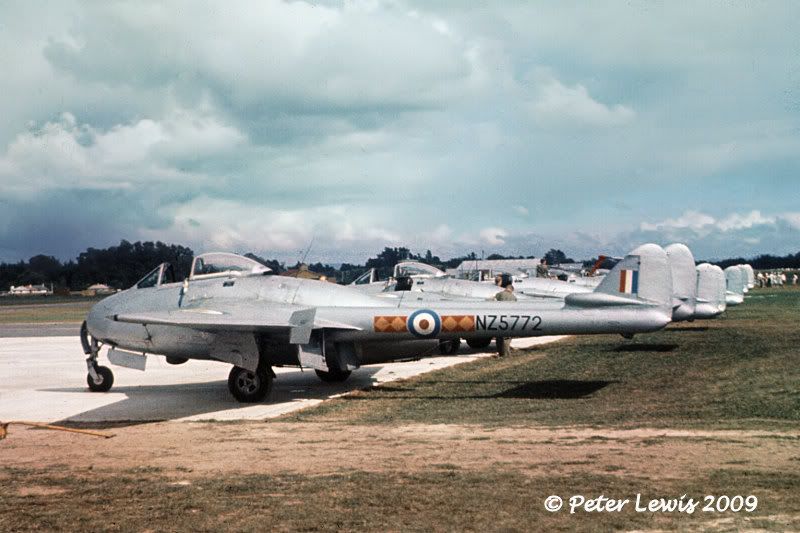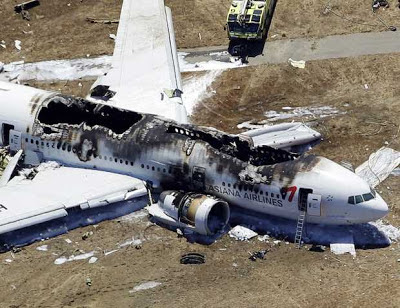Korean jet crashes at San Francisco Airport: Pilot error to blame?
The plane that crashed at San Francisco's airport was flying "significantly below" its intended speed and its pilot was in training.
Asiana Airlines said the pilot in charge of landing the Boeing 777, Lee Kang-kook, was training for the long-range plane and it was his first flight to that airport with the jet. Asiana Airlines said he had previously flown to San Francisco on different planes and was being assisted by another pilot more experienced with the Boeing 777.
Information collected from the plane's cockpit voice recorder and flight data recorder indicated that there were no signs of trouble until seven seconds before impact, when the crew tried to accelerate, NTSB Chairwoman Deborah Hersman said at a news conference at the airport.
Opinion on possible cause of this crash:
Images FAA
A stall warning in which the cockpit controls begin to shake activated four seconds before impact, and the crew tried to abort the landing and initiate what is known as a "go around" maneuver 1.5 seconds before crashing, Hersman said.
"Air speed was significantly below the target air speed" of 137 knots, she said. The throttle was set at idle as the plane approached the airport and the "engines appear to respond normally" when the crew tried to gain speed in the seconds before the crash, Hersman said.
If a landing cannot be made on the first third of the runway, or the airplane drifts sideways, the pilot should EXECUTE A GO-AROUND.
Ballooning During Round-out
If you misjudge the rate of sink during a landing and think the airplane is descending faster than it should, there is a tendency to increase the pitch attitude and angle of attack too rapidly. This not only stops the descent, but actually starts the airplane climbing, known as ballooning.
Ballooning can be dangerous because the height above the ground is increasing and the airplane may be rapidly approaching a stalled condition.I suspect the plane balloned, and the tail slammed into the ground as the pilot tried to climb out of the stall/ballooning.
When ballooning is excessive, it is best to EXECUTE A GO-AROUND IMMEDIATELY; and NOT ATTEMPT TO SALVAGE THE LANDING.
Power must be applied before the airplane enters a stalled condition. Reuters reports that the stall warning had already sounded, so there was no powering out of the descent.
Two Chinese teenagers died in the incident and more than 180 people were injured, local officials said. In a tragic new twist, the San Francisco Fire Department said that one of the teenagers may have been run over by an emergency vehicle as first responders scrambled to the scene.
"One of the deceased did have injuries consistent with those of having been run over by a vehicle," fire department spokeswoman Mindy Talmadge said. "Many agencies were on the field yesterday."
Autopsies to determine the cause of death will be conducted by the San Mateo County coroner's office, officials said.
More than 30 people remained hospitalised late. Eight were listed in critical condition, including two with paralysis from spinal injuries, according to hospital officials.
The charred hulk of the aircraft remained on the airport tarmac as flight operations gradually returned to normal. Three of the four runways were operating by Sunday afternoon.
Hersman said it was too early to speculate on the cause of the crash. The data recorders corroborated witness accounts and an amateur video, shown by CNN, that indicated the plane came in too low, lifted its nose in an attempt to gain altitude, and then bounced violently along the tarmac after the rear of the aircraft clipped a seawall at the approach to the runway.
Asked whether the information reviewed by the NTSB showed pilot error in the crash, Hersman did not answer directly.
"What I will tell you is that the NTSB conducts very thorough investigations. We will not reach a determination of probable cause in the first few days that we're on an accident scene," she told reporters.
Asiana said mechanical failure did not appear to be a factor in the crash. Hersman confirmed that a part of the airport's instrument-landing system was offline on Saturday as part of a scheduled runway construction project, but cautioned against drawing conclusions from that.
"You do not need instruments to get into the airport," she said, noting that the weather was good at the time of the crash and that the plane had been cleared for a visual approach.
The Asiana flight originated in Shanghai and was flying to San Francisco from Seoul with 291 passengers and 16 crew members on board. Several large groups of Chinese students were among the passengers.
People on the flight said nothing seemed amiss until moments before the plane hit the ground. Pictures taken by survivors showed passengers hurrying out of the wrecked plane, some on evacuation slides. Thick smoke billowed from the fuselage and TV footage showed the aircraft gutted and blackened by fire. Much of its roof was gone.
Interior damage to the plane also was extreme, Hersman said on CNN earlier on Sunday.
"You can see the devastation from the outside of the aircraft, the burn-through, the damage to the external fuselage," she said. "But what you can't see is the damage internally. That is really striking."
The NTSB released photos showing the wrecked interior cabin oxygen masks dangling from the ceiling.
The dead were identified as Ye Meng Yuan and Wang Lin Jia, both 16-year-old girls and described as Chinese nationals who are students, Asiana Airlines said. They had been seated at the rear of the aircraft, according to government officials in Seoul and Asiana, and were found outside the airplane.
Hersman said the first crew of emergency workers to arrive at the scene included 23 people in nine vehicles. San Francisco Mayor Ed Lee said a total of 225 first responders were involved.
"As chaotic as the site was yesterday, I think a number of miracles occurred to save many more lives," Lee said at the airport news conference. Appearing later at San Francisco General Hospital, he declined to address whether one of the Chinese teenagers may have been run over.
The crash was the first fatal accident involving the Boeing 777, a popular long-range jet that has been in service since 1995. It was the first fatal commercial airline accident in the United States since a regional plane operated by Colgan Air crashed in New York in 2009.
"For now, we acknowledge that there were no problems caused by the 777-200 plane or (its) engines," Yoon Young-doo, the president and CEO of the airline, told reporters on Sunday at the company headquarters on the outskirts of Seoul.
Asiana said passengers included 141 Chinese, 77 South Koreans, 64 Americans, three Indians, three Canadians, one French, one Vietnamese and one Japanese citizen.
Asiana, South Korea's junior carrier, has had two other fatal crashes in its 25-year history.
- Reuters



























